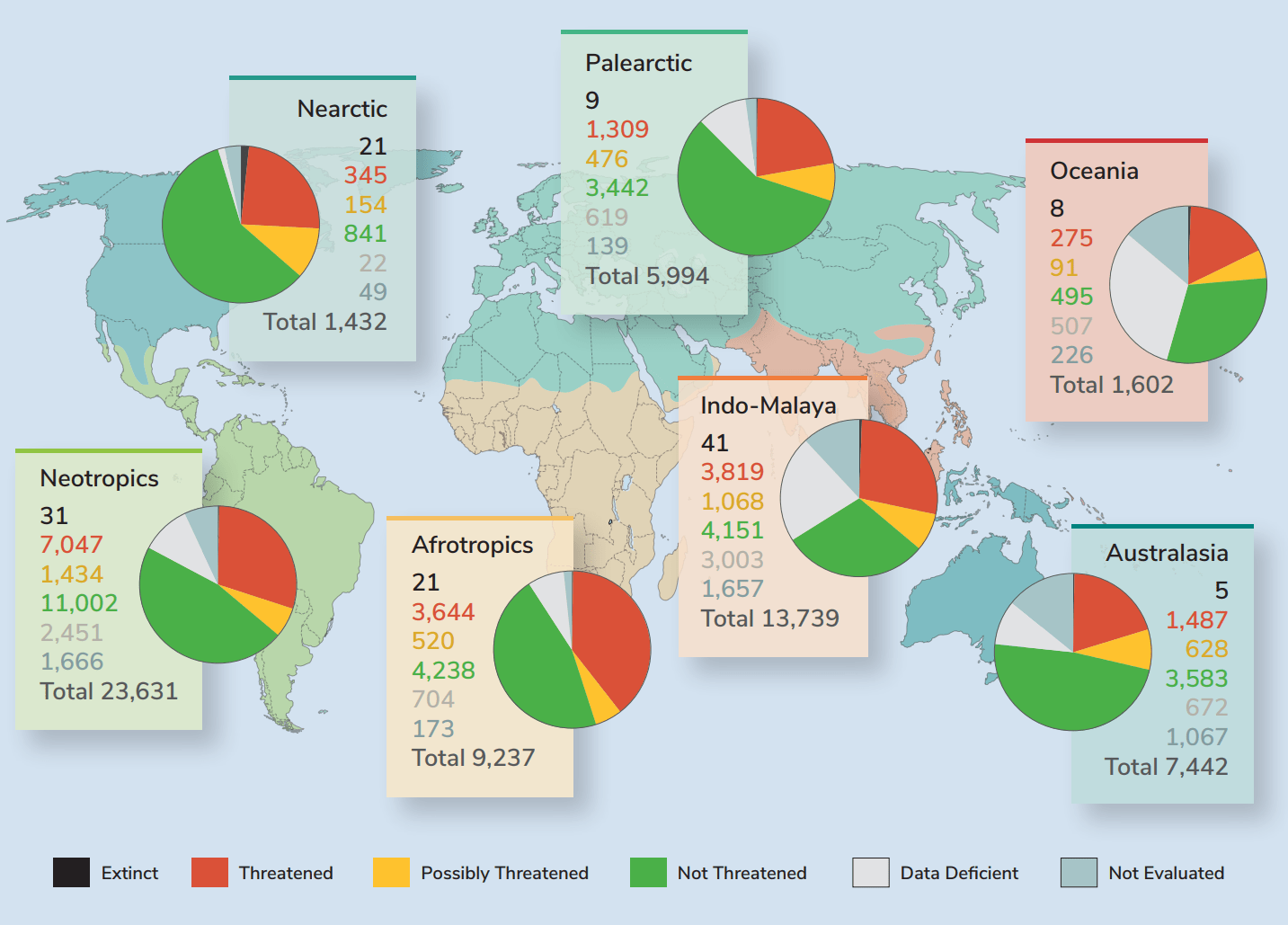One third of the world's 60,000 known tree species are threatened with extinction, according to a report by Botanic Gardens Conservation International (BGCI), which compiled five years of global research.
In Europe, 58% of wild tree species are threatened with extinction.
“This report is a wake-up call for everyone,” said Paul Smith, BGCI Secretary General.
“Policy makers and experts in conservation can now mobilise the resources and expertise needed to prevent future extinctions.”
The report, titled “State of the World’s Trees,” said that at least 142 tree species are already recorded as extinct in the wild.
More than 440 other tree species are on the brink of extinction, meaning fewer than 50 of them remain in the wild, and another 17,500 species (about 30 percent) in the world are at risk of extinction.
That means there are twice as many endangered tree species worldwide as endangered mammals, amphibians and reptiles combined.
“Trees are of vital importance ecologically, culturally and economically,” the report reads, adding that trees “define forest distribution, composition and structure and thus provide habitat for half the world’s known terrestrial plant and animal species.”
But trees can also play a role in mitigating some of the effects of climate change.
“Trees are also highly significant components of biodiversity and carbon storage in many other ecosystems such as woodlands, grasslands, as well as artificial and urban environments,” the report explained.
“The interlinked biodiversity crisis and challenge of global climate change cannot be addressed without informed management of tree species.”

Graphic from BGCI
In Europe, the rowan tree and its relatives are the most threatened tree species, and Brazil has the highest number of endangered tree species with 1,788.
The main threats to trees are cultivated crops, which threaten 29 percent of trees, followed by logging with 27 percent, livestock farming with 14 percent, and residential and commercial development, along with fire and fire suppression, both affecting 13 percent of trees.
Other causes are energy production and mining, wood and pulp plants (like the kind that Belgium uses), invasive and other problematic species, and climate change.
Many countries have promised to plant more trees in an attempt to make up for their carbon footprints, but Oxfam has called such net-zero plans “scams,” pointing out that there isn’t enough space to plant the trees in the numbers they’re promising.
Europe’s role in the issue of deforestation goes back centuries, to the exploitation and pillaging of colonialism.
“The forests of the Caribbean region were exploited for European timber use from the time of Columbus, with mahogany, Swietenia mahagoni, especially prized,” the report explained.
“Exploitation of West African timber for the European market can be traced back at least to 1672, when the Royal African Company received a charter from King Charles II of England to trade in African mahogany.”
By the end of the twentieth century, the report said, one assessment of the extent of logging in the tropics indicated that 20 percent of the tropical forest biome was either actively logged or allocated to logging concessions between the years 2000 and 2005.
And about half of this area had already lost over 50 percent of its potential forest cover.
The report brings together research from more than 60 partners, including universities, forestry institutions, and over 500 experts.
The Botanical Garden of Meise also contributed to the report.

